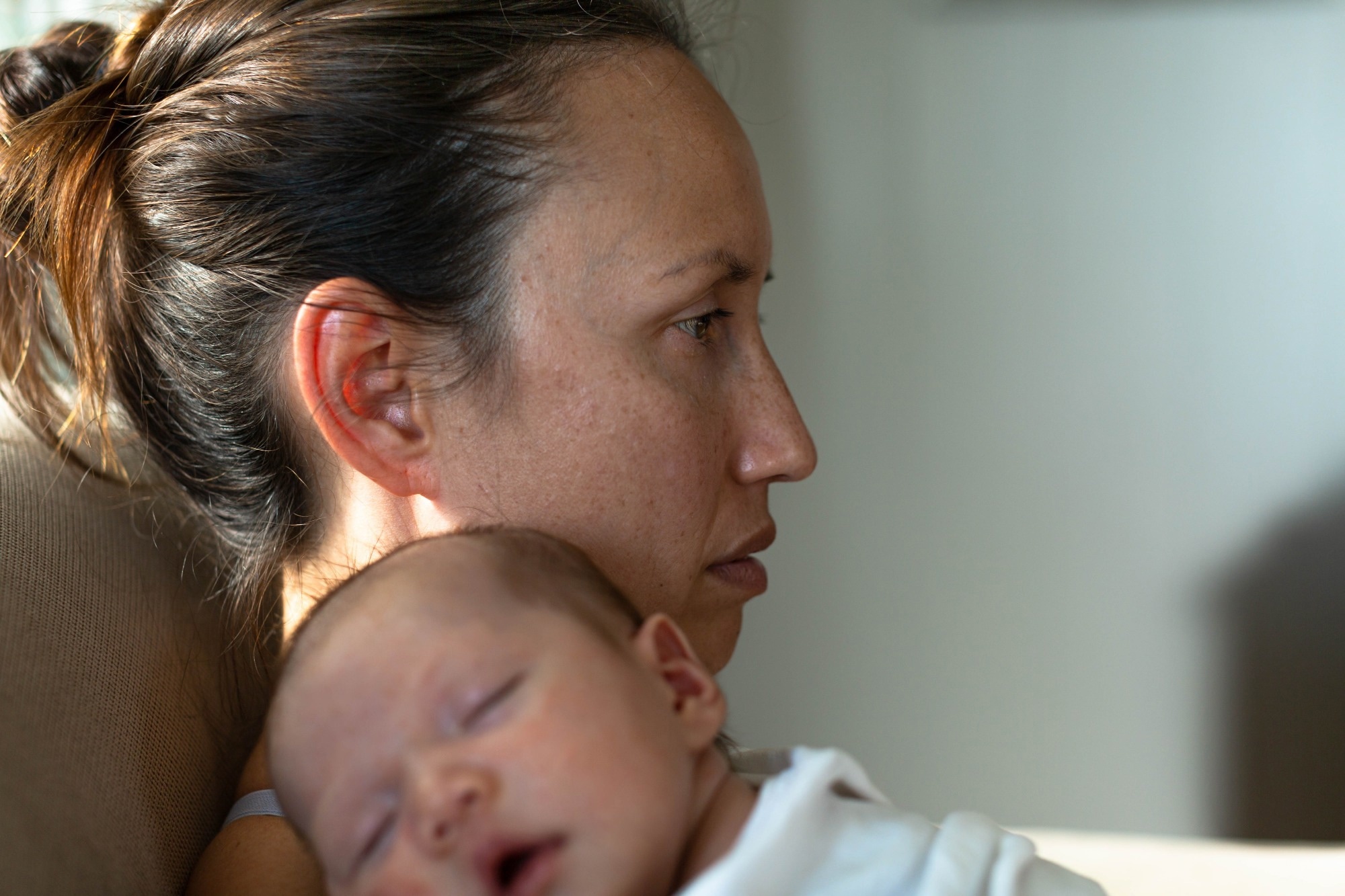In a recent study published in the British Medical Journal, researchers investigated whether low-dose esketamine delivered after labor improves post-delivery depression in women with prenatal depression.
 Study: Efficacy of a single low dose of esketamine after childbirth for mothers with symptoms of prenatal depression: randomised clinical trial. Image Credit: christinarosepix / Shutterstock
Study: Efficacy of a single low dose of esketamine after childbirth for mothers with symptoms of prenatal depression: randomised clinical trial. Image Credit: christinarosepix / Shutterstock
Background
Perinatal depression is common among women, particularly in low-income nations, and has negative consequences for both the mother and her child. Mothers with depression frequently feel anxiety, weaker connections, and lower attachment. Their kids are more likely to experience behavioral and emotional issues, as well as long-term psychological and developmental disorders. Poor physical health, a lack of social support, a low socioeconomic level, insufficient education, and a history of violent exposure are all risk factors for prenatal depression.
Prenatal depression is a primary predictor of postnatal depression, and pharmacological therapies are occasionally required. Esketamine, a rapid-onset antidepressant, offers potential advantages for treatment-resistant depression, but its effect on women with perinatal depression is unknown. Previous studies have mainly focused on cesarean births, omitting moms who are depressed or at high risk of developing depression after delivery.
About the study
In the present randomized, placebo-controlled, double-blinded, controlled trial, researchers evaluated whether low-dose esketamine administered immediately after birth lowers depression in moms suffering from prenatal depression for 42 days.
The researchers conducted the trial at five hospitals across China between June 19, 2020, and August 3, 2022. They included pregnant women aged 18 years and above with mild, moderate, or severe prenatal depression [defined as Edinburgh postnatal depression scale (EPDS] scores equal to or above 10) hospitalized for delivery. They excluded women with pre-pregnancy mood disorders, severe pregnancy complications, physical status III or higher, or contraindications to ketamine or esketamine use, such as severe cardiovascular disease, refractory hypertension, or hyperthyroidism. Exclusion criteria included American Society of Anesthesiologists (ASA) physical status III or higher.
The researchers randomized the individuals in a 1:1 ratio to the esketamine group (0.20 mg per kg body weight) or placebo group, with drugs administered intravenously during the initial 40 minutes post-delivery while clipping the birth cord. The primary research outcomes were major depressive events after 42 days of delivery, identified using mini-international neuropsychiatric interviews.
Secondary study outcomes included EPDS scores on days one and 42 after childbirth and the Hamilton Depression Rating Scale (HDRS) score 42 days after delivery. The researchers monitored adverse occurrences until 24 hours after delivery. They used logistic regression to determine the relative risk (RR) values. They used imputed missing primary outcome data in post-hoc sensitivity analyses.
The researchers measured anxiety using the Zung self-rating anxiety scale, social assistance using the social support rating scale, marital satisfaction using the ENRICH (evaluation and nurturing relationship issues, communication, and happiness) scale, and agitation-sedation using the Richmond agitation-sedation scale. Maternal data included epidural analgesia acceptance, delivery style, fluid infusion, and blood loss, as well as the use of additional analgesics and sedatives. Bodyweight, sex, Apgar scores at one and five minutes after delivery, and initial destination were all recorded.
Results
The researchers screened 14,243 women and randomly assigned 364 to the study groups. The average participation age was 32 years. After 42 days, 12 (6.7%) esketamine recipients and 46 (25%) placebo recipients experienced a severe depressive episode (RR 0.3). After accounting for missing data, 14 (7.7%) of esketamine recipients and 46 (25%) of placebo recipients experienced severe depressive episodes (RR 0.3). The protocol analysis yielded comparable results.
Esketamine-treated women had lower EPDS scores on day 7 and day 42 (median difference, -3). Individuals receiving esketamine also had reduced HDRS scores 42 days after delivery (mean difference, -4). Neuropsychiatric adverse event occurrence (including dizziness, diplopia, and hallucinations) was higher among individuals receiving esketamine (45%, n=82) compared to those receiving placebo 22% (n=40); however, the symptoms lasted <24 hours, with none requiring pharmacological therapy.
Esketamine-treated women had lower EPDS scores on day seven and 42 (median difference, -3). Individuals receiving esketamine also had reduced HDRS scores 42 days after delivery (mean difference, -4). Neuropsychiatric adverse event occurrence (including dizziness, diplopia, and hallucinations) was higher among individuals receiving esketamine (45%, n=82) compared to those receiving placebo 22% (n=40); however, the symptoms lasted <24 hours, with none requiring pharmacological therapy.
Overall, the study found that a single modest dosage of 0.2 mg/kg of esketamine administered soon after childbirth reduces major depressive events among women with prenatal depressive symptoms by almost three-quarters at 42 days postpartum. Esketamine increased the frequency of neuropsychiatric symptoms, but they were brief and lasted <24 hours, requiring no medication. The antidepressant effect of low-dose esketamine appears to continue longer in women with prenatal depression than in the overall population with depression. Further analysis is required to establish whether the reaction continues after 42 days.
Journal reference:
- Shuo Wang et al., Efficacy of a single low dose of esketamine after childbirth for mothers with symptoms of prenatal depression: randomised clinical trial, BMJ 2024;385:e078218, DOI: 10.1136/bmj-2023-078218, https://www.bmj.com/content/385/bmj-2023-078218